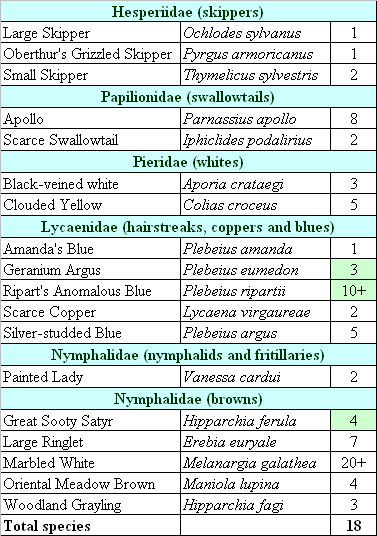with photos by Richard Coomber, Peter Eeles, Gordon Hopkins, Tim Norriss and Mike Wall.
This report details the butterflies, moths and other wildlife observed on a trip made to Bulgaria from 1st July to 8th July 2007. The 8 members of the party were Gordon Hopkins, Juliet Bloss, Mary Talbot, Mike Wall, Peter Davey, Peter Eeles, Richard Coomber and Tim Norriss.
The tour was organised through the British-Bulgarian Friendship Society (BBFS, www.bbfs.org.uk) and was led by Assen Ignatov.
Each site we visited is identified with a letter (A through U). Our route, with the various sites overlaid, is shown below. The route started and ended at Sofia, the most northerly point of the route.

Details of each of the sites in this report are as follows:
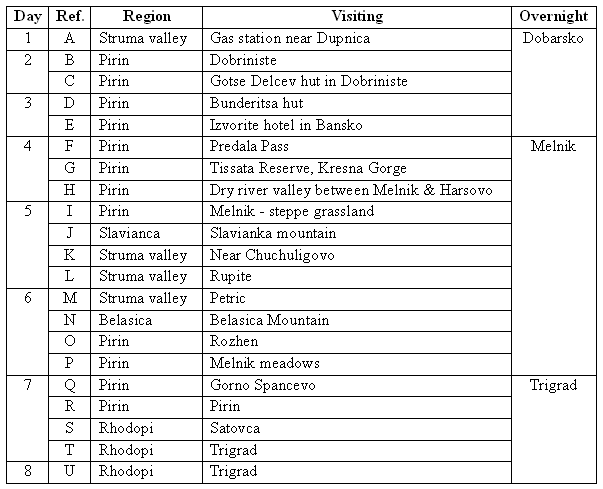
Most of the day was spent getting from the UK to Bulgaria's capital, Sofia, and then south travelling to Bansko, a well-known ski resort, where we were to spend 3 nights. Scarce Swallowtail (Iphiclides podalirius) and Clouded Yellow (Colias croceus) were spotted from the bus as we made our way south. We stopped off at a petrol station between Sofia and Bansko and took the opportunity to explore a very small patch of wasteland which had small numbers of Small Heath (Coenonympha pamphilus) and Marbled White (Melanargia galathea), together with a single specimen of both Purple-shot Copper (Lycaena alciphron) and Lesser Fiery Copper (Lycaena thersamon). Tawny Wave (Scopula rubiginata), Crested Lark and several Red-rumped Swallows were also seen here.
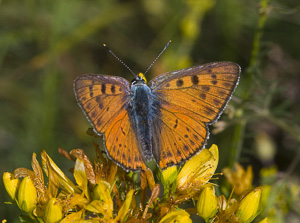
We eventually arrived at our accommodation in Dobarsko, about 15km from Bansko.
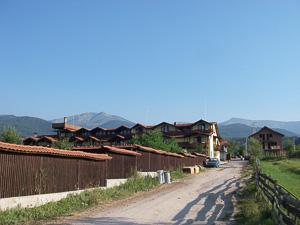
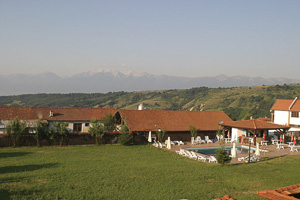
Butterfly Day Listing
Site A - Gas station near Dupnica
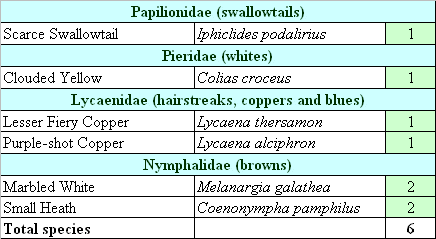
In this report, first sightings are shaded green in each table, the letters O, L and P refer to Ovum, Larva and Pupa, respectively. "sp." refers to a "species" of butterfly where the actual species could not be determined - such as a "fly by" of "an" Orange-tip species.
An early morning walk before breakfast produced a single Large Tortoiseshell (Nymphalis polychloros) in a nearby orchard, together with several Tree Sparrows, Red-backed Shrike, Hawfinch and Eastern Bonelli's Warbler. For our first full day we visited Dobriniste, in the foothills of the nearby Pirin Mountains. Our first stop was actually on the side of the road!
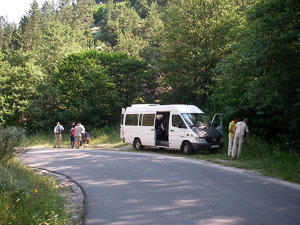
Not expecting anything particularly spectacular, we were immediately proved wrong with sightings of several Arran Brown (Erebia ligea), a species that has historically been recorded in the UK, from where it gets its vernacular name (the Isle of Arran).
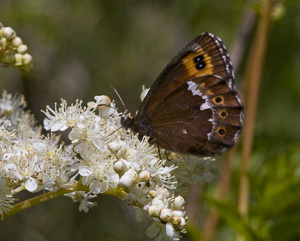
A black and yellow ascalaphid (Ascalaphus macaronius) was flying in the warm sunshine and Actinotia radiosa was watched nectaring on marjoram. Bright Wave (Idaea ochrata) was also seen.
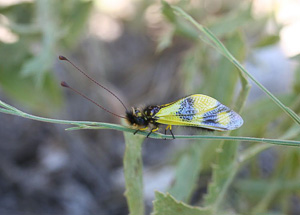
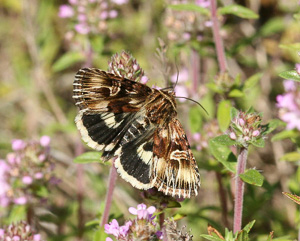
Good numbers of Silver-studded Blue (Plebeius argus) were also flying along the roadside. A little further up the road we had occasional sightings of Black-veined White (Aporia crataegi), and single sightings of High Brown Fritillary (Argynnis adippe) and Queen of Spain Fritillary (Issoria lathonia). As is to be expected in many areas in Europe, one of the commonest species seen was the Heath Fritillary (Melitaea athalia), quite a rarity back home where it is at the limit of its range. A single Large Blue (Glaucopsyche arion) was also seen flying along the rocky verges.
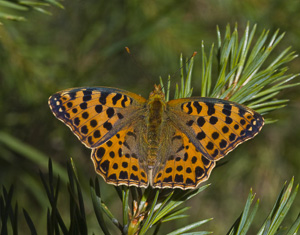
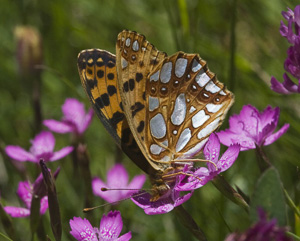
After our encounters with several other species, we returned back to the bus and made our way further up the road to an absolutely exquisite establishment, in the middle of nowhere, where we were eventually to spend lunch. Surely one of the most remote "restaurants" on the planet! But first, we had an hour or so to explore the surrounding area. As the last of us was leaving the bus, a male Purple Emperor (Apatura iris) decided to enter the bus, do a couple of circuits, and then fly out again! It turned out that there were several individuals flying around, but none settling in range for good photo opportunities. The nearby area was quite varied, with patches of bare earth surrounded by lush vegetation fed by water running down from the hills, making some of the area quite soggy under foot.
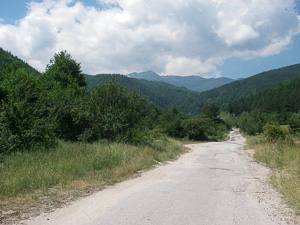
There were good numbers of Black-veined White (Aporia crataegi), including one seen laying on a blackthorn bush. We saw several hairstreak flying around which turned out to be Sloe Hairstreak (Satyrium acaciae) and several Feathered Footman of both sexes were disturbed from the grass as we walked along. The highlight, however, was the sighting of a single Yellow-banded Skipper (Pyrgus sidae), one of the specialties in the area and that has a distinctive underside.
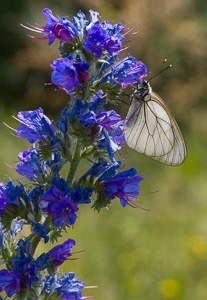
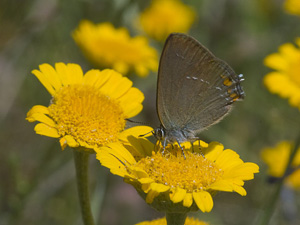
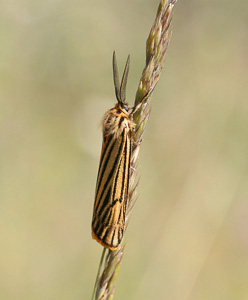
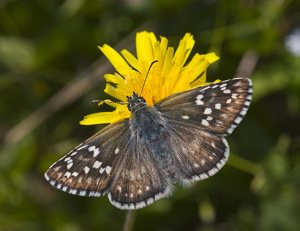
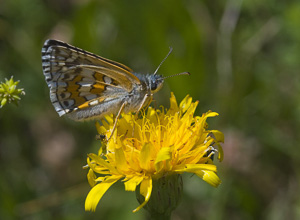
Several Amanda's Blue (Plebeius Amanda) were seen taking up salts from muddy pools of water, and we also saw several Balkan Copper (Lycaena candens), Scarce Copper (Lycaena virgaureae), Great Banded Grayling (Hipparchia circe), Pearly Heath (Coenonympha arcania), Wood White (Leptidea sinapis) and Mazarine Blue (Plebeius semiargus).
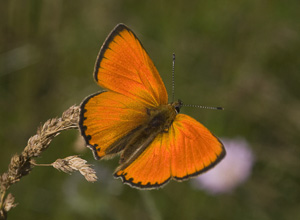
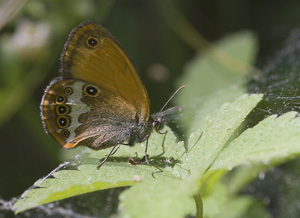
Singletons of several species were also seen, including Marbled Skipper (Carcharodus lavatherae), Tufted Marbled Skipper (Carcharodus flocciferus), Sooty Copper (Lycaena tityrus), Lesser Marbled Fritillary (Argynnis ino), Lesser Spotted Fritillary (Melitaea trivia), Chestnut Heath (Coenonympha glycerion) and Large Wall Brown (Pararge maera). A Cicada was also found and photographed.
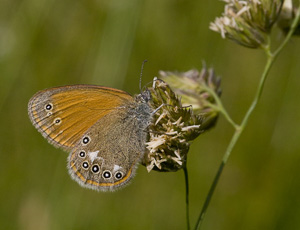
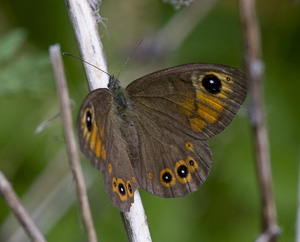
We then had lunch in the "restaurant" which was a very unusual experience. Aside from the occasional sighting of Purple Emperor (Apatura iris), and a Small Copper (Lycaena phlaeas) which was egg-laying on some sorrel growing next to one of the seats, we also got to choose our lunch. This entailed pointing out the particular fish we would like our hosts to catch from their lake. It was subsequently grilled and served up with salad! It turned out that this establishment was a fish farm, made up of a series of pools which were fed from large pipes that were protruding from the mountain side.
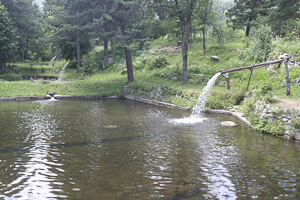
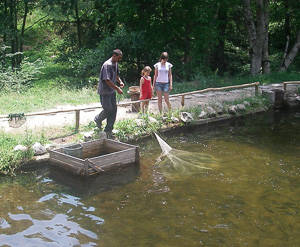
After lunch we moved on to an area know as the "Gotse Delcev hut" in Dobriniste. This site contained very lush meadows with plenty of wild flowers protruding from the tall grasses that were growing.
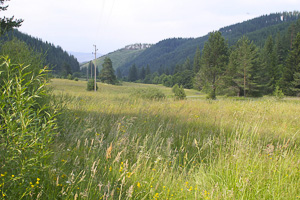
Here we came across a large colony of Balkan Copper (Lycaena candens) including an aberration that was as much white as copper!
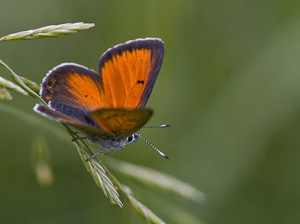
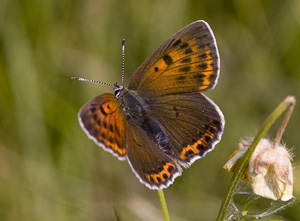
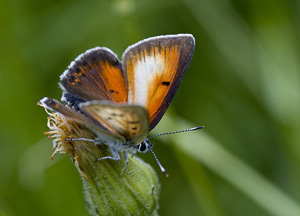
We also had our first encounters with several species, including Large Grizzled Skipper (Pyrgus alveus), Northern Brown Argus (Plebeius artaxerxes), Knapweed Fritillary (Melitaea phoebe), Marbled Fritillary (Argynnis daphne), Poplar Admiral (Limenitis populi), Small Pearl-bordered Fritillary (Boloria selene) and Weaver's Fritillary (Boloria dia).
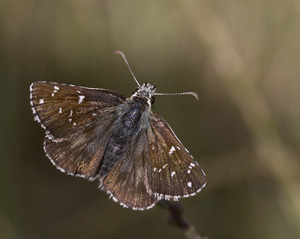
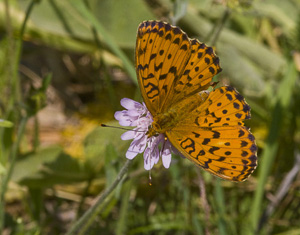
Butterfly Day Listing
Site B - Dobriniste
Site C - Gotse Delcev hut in Dobriniste
* near Hotel
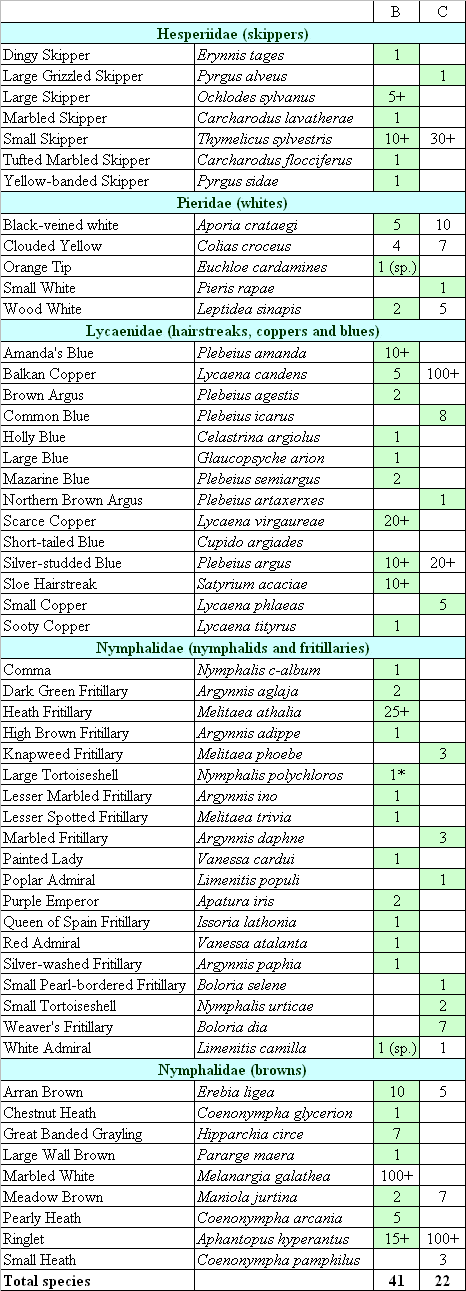
We had set two moth traps the previous evening in the garden of our hotel and though the garden comprised mainly of lawn and swimming pool there were still things of interest to see in the morning. About eighty-five species were trapped including Pine-tree Lappet (Dendrolimus pini) and Bordered Gothic (Heliophobus reticulata) although most were well-known British species. After breakfast we ventured up into the mountains, to Bunderitsa hut. It took us a good while to get there, with the bus taking a seemingly endless series of turns as we wound our way up the mountain. We passed several ski lifts along the way and several dangerous drops off the side of the road, some of which had been discovered judging by the number of abandoned trucks and cars at the bottom of them!
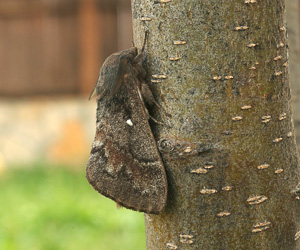
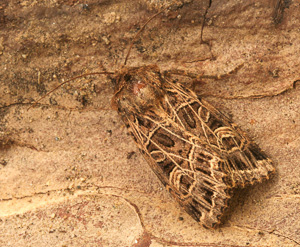
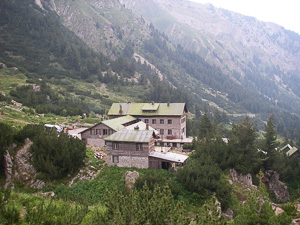
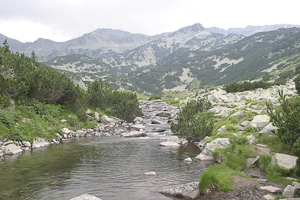
As soon as we had emerged from the van, we were pleasantly pleased to find a Ring Ouzel (Turdus torquatus) flying just a small way up the mountain and appearing very tame. Later several Alpine Chough (Pyrrhocorax graculus) were seen flying overhead. As we walked along the mountainside, we encountered 2 new ringlet species for us - Ottoman Brassy Ringlet (Erebia ottomana) and Large Ringlet (Erebia euryale). Telling the various Erebia apart was sometimes difficult, but good views of both upperside and underside allowed us to finally identify our find.
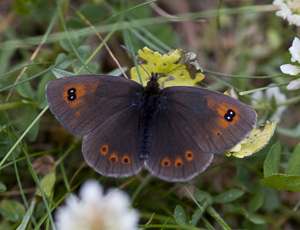
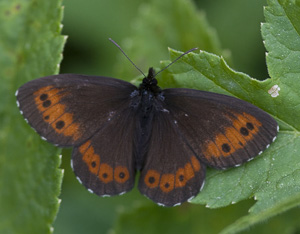
Also in the area of the hut we found a single Turquoise Blue (Plebeius dorylas) resting on a flower head. The weather was starting to turn rather inclement by now, with fewer butterflies seen. However, we did get good sightings of Eastern Large Heath (Coenonympha rhodopensis).
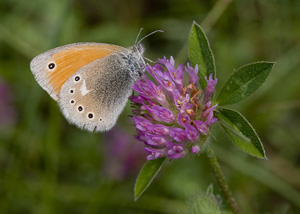
We then walked down the mountain road from the hut, stopping to get refreshments at a café stop that some enterprising soul had set up on one of the bends.
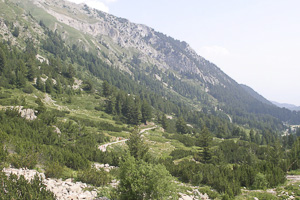
While sitting eating lunch we noticed good numbers of butterflies around us - including a sighting of Osiris Blue (Cupido osiris). This stop was an absolute magnet for Mazarine Blue (Plebeius semiargus). While the individuals we'd seen in the valley were somewhat tatty, I can only assume that the adults flying here had emerged later, possibly due to the cooler climate, and were in absolutely mint condition.
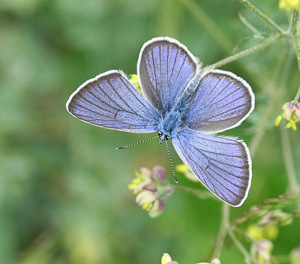
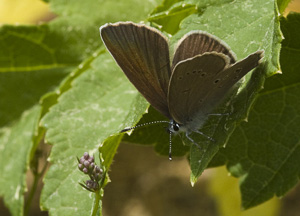
A short walk after lunch produced several Nutcracker (Nucifraga caryocatactes) calling and flying overhead whilst Mike spotted our only clearwings of the trip, a mating pair of what has been tentatively identified as Chamaesphecia tenthrediniformis.
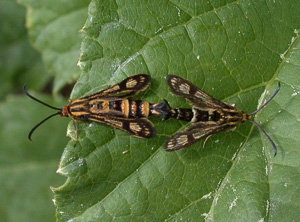
Further down the mountain we stopped at one of the meadows to see what was flying. The change of habitat meant even more new species for the trip. Here we came across some very worn Clouded Apollo (Parnassius mnemosyne) together with several Balkan Fritillary (Boloria graeca).
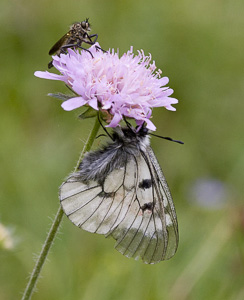
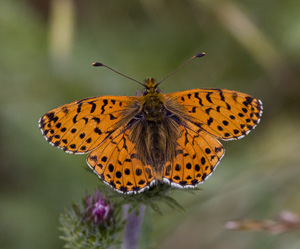
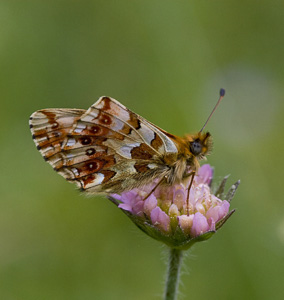
Back on the bus, and we were off to our final site for the day - a meadow known for its Mountain Alcon Blue (Glaucopsyche rebeli) colony.
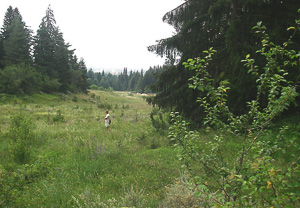
Here we found good numbers of Mountain Alcon Blue (Glaucopsyche rebeli) eggs on Cross-leaved Gentian (Gentiana cruciata) as well as several worn adults.
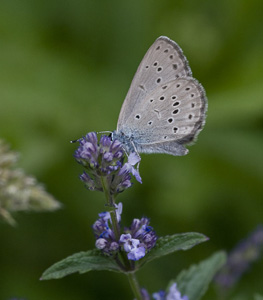
Butterfly Day Listing
Site D - Bunderitsa hut
Site E - Izvorite hotel in Bansko
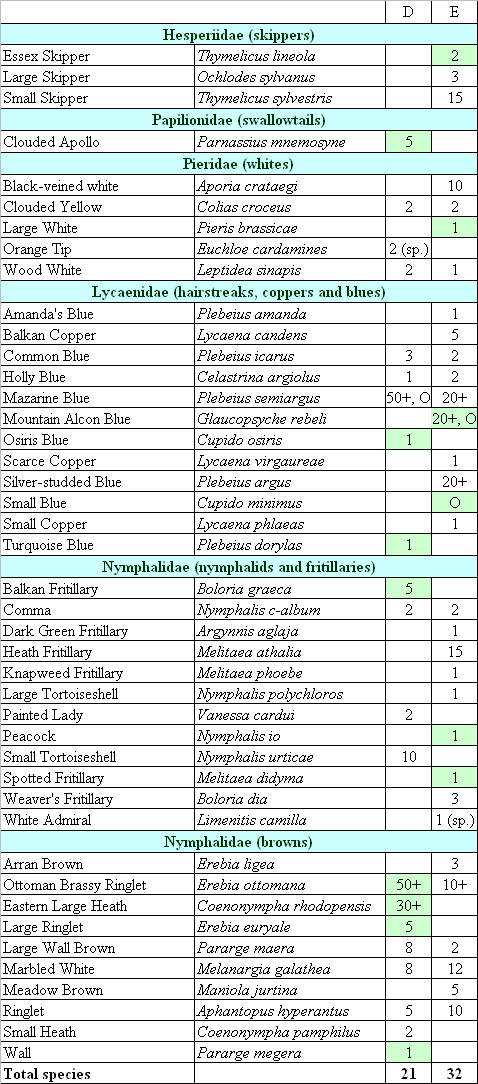
Some of us were up early to look through the moth-traps on our last morning at Dobarsko. About seventy, mainly familiar species, were caught with highlights including Mere Wainscot (Chortodes fluxa), Pale-shouldered Cloud (Chloantha hyperici), Essex Emerald (Antonechloris smaragdaria) and Diasemiopsis ramburialis and the fine Spatalia argentina. Today was spent travelling to Melnik, where we were to spend a few nights, stopping off at various sites along the way. Our first stop was a field next to an old chapel.
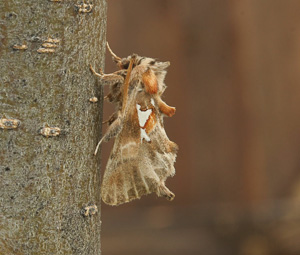
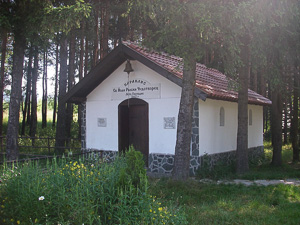
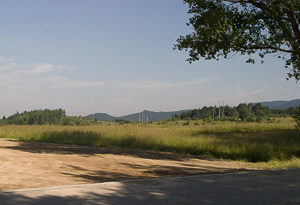
Here we found several Purple-shot Copper (Lycaena alciphron), Scarce Copper (Lycaena virgaureae), Silver-studded Blue (Plebeius argus), Heath Fritillary (Melitaea athalia) and Weaver's Fritillary (Boloria dia). We also found a new species for us - Oberthur's Grizzled Skipper (Pyrgus armoricanus).
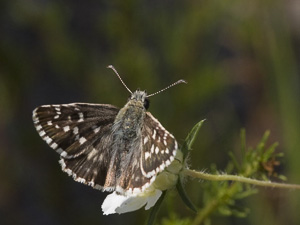
Our second site for the day was at Tissata Reserve in the Kresna Gorge. We also spent some time "over the road" from the reserve where a crossing over a river led to some nice wooded areas.
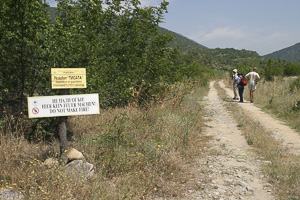
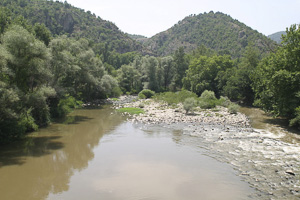
The reserve itself had good numbers of Scarce Swallowtail (Iphiclides podalirius), Eastern Bath White (Pieris edusa) and Southern Small White (Pieris mannii), all feeding avidly from the various flowers.
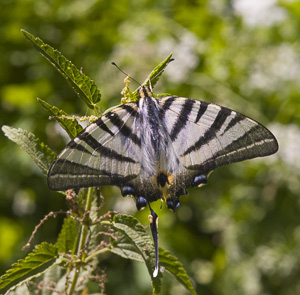
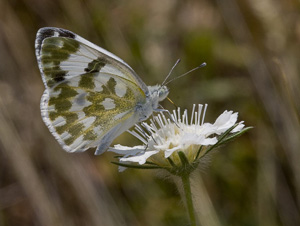
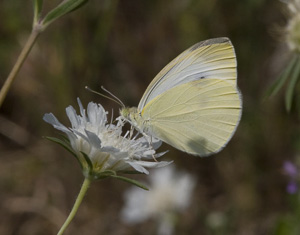
But the highlight for most of us was seeing our first Little Tiger Blue (Tarucus balkanicus), a specialty on the reserve.
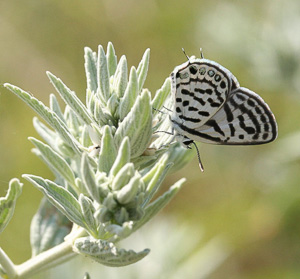
Other new species for us included Mallow Skipper (Carcharodus alceae) and Eastern Wood White (Leptidea duponcheli), distinguished from the Wood White (Leptidea sinapis) by the brown tips on the antennae. The previous occupant of a two metre long shed snake skin found by the path wasn't seen.
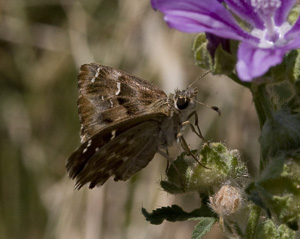
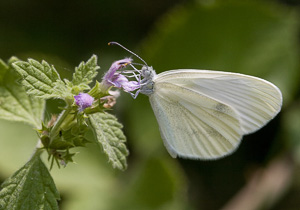
Several Chapman's Blue (Plebeius thersites) and a single Balkan Marbled White (Melanargia Larissa) were also found before we crossed over the road to see what we could find in the woodland there. The different habitat came up trumps with different species being seen - our first sightings of both Common Glider (Neptis sappho) and Southern White Admiral (Limenitis reducta).
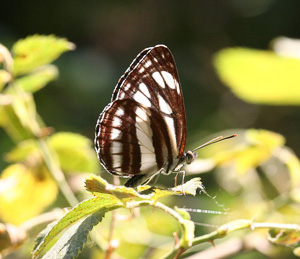
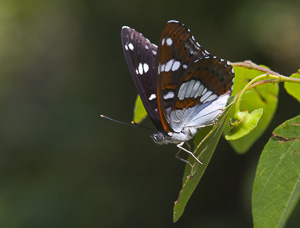
The distinctive circular pits in the sand formed by antlion larvae were a first for many of us.
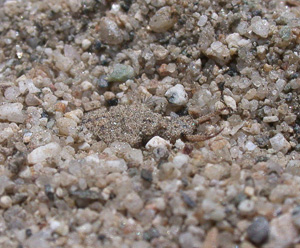
Back on the bus and on to our final site for the day - a dry river valley between Harsovo and Melnik. Apart from finding a local tortoise scuttling across the ground, this site also gave us some new butterfly species. Specifically, we had our first sightings of Lulworth Skipper (Thymelicus acteon) and Adonis Blue (Plebeius bellargus). We also saw good numbers of Clouded Yellow (Colias croceus) and Silver-studded Blue (Plebeius argus). Small parties of finches and buntings were coming down to drink in the stream and everyone got good views of Hawfinch, Cirl Bunting, Black-headed Bunting and Corn Bunting. A Middle Lace Border (Scopula decorata) was also seen and photographed.
We then reached our accommodation in Melnik, a wonderful old village with marble-paved road. Our hotel, which used to be the jail, is sited on the edge of stream which had completely dried up.
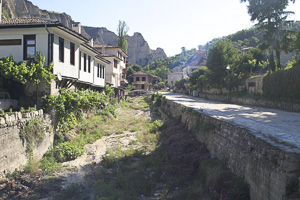
A search of the surrounding area didn't disappoint - with a new species for the trip - a Meleager's Blue (Plebeius daphnis) that has a distinctive scalloped profile on the hindwing.
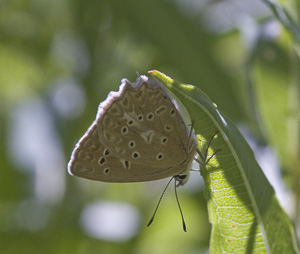
In the garden at the rear of the accommodation were various herbs, including fennel, which was host to several Swallowtail (Papilio machaon) larvae.
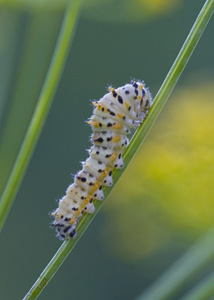
Butterfly Day Listing
Site F - Predala Pass
Site G - Tissata Reserve, Kresna Gorge
Site H - Dry river valley between Melnik and Harsovo
* At the accommodation in Melnik
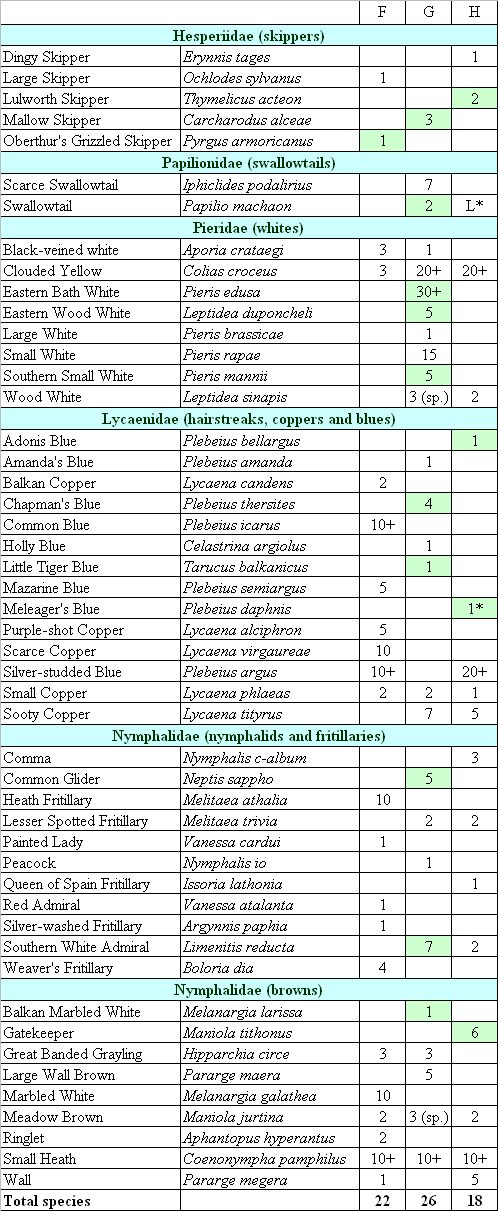
The only place to put a moth trap at Melnik was in a rather enclosed courtyard garden at the rear, and due to a misunderstanding with the owner the light was switched off in the early hours so the only moths remaining in the morning were a Spotted Sulphur (Emmelia trabealis), Sussex Emerald (Thalera fimbrialis) and Oak Yellow Underwing (Catocala nymphagoga). We set off for the local marble quarry and hadn't gone far when, during a brief stop to scan for birds, a Calandra Lark carrying food, landed a short distance from the bus and then walked to its nest where it unfortunately was hidden from view. A Tawny Pipit was watched song-flighting and Bee-eaters were hunting alongside the bus. We spent the morning at an old marble quarry where the surrounding area was particularly lush, with meadows full of flowers.
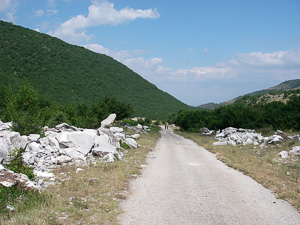
As soon as we emerged from the van we saw a new species for the trip - a Woodland Grayling (Hipparchia fagi) basking on a rock. This site was particularly good for various Colias species, especially Clouded Yellow (Colias croceus) and, a first for us, Berger's Clouded Yellow (Colias alfacariensis).
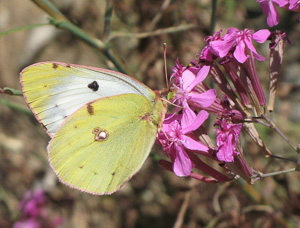
Other new species included Grizzled Skipper (Pyrgus malvae), Sandy Grizzled Skipper (Pyrgus cinarae), Camberwell Beauty (Nymphalis antiopa) and Oriental Meadow Brown (Maniola lupina). Unfortunately, the Camberwell Beauty was simply a "fly past".
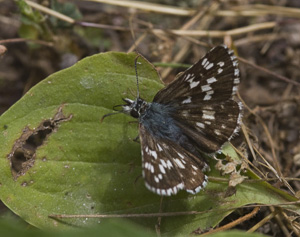
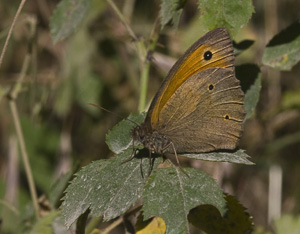
The site also had good numbers of Eastern Wood White (Leptidea duponcheli), Silver-studded Blue (Plebeius argus), Sloe Hairstreak (Satyrium acaciae), Heath Fritillary (Melitaea athalia), Lesser Spotted Fritillary (Melitaea trivia), Weaver's Fritillary (Boloria dia), Marbled White (Melanargia galathea) and Meadow Brown (Maniola jurtina).
The remainder of the day was focused on the ornithologists in the group. We moved on to a site, near Chuchuligovo, renowned for its colony of Rollers which were seen rather distantly. Butterflies were very thin on the ground, although a couple of Weaver's Fritillary (Boloria dia) made a showing.
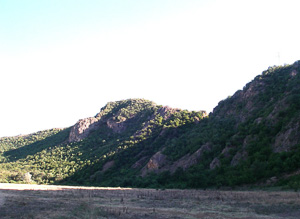
We then moved onto a site, at Rupite, where we could watch the bird life and where the locals were relaxing in a natural hot spring. Two Long-legged Buzzards (Buteo rufinus) were seen at this site which is remarkable for its Bee-eaters that were nesting in the flat sandy ground next to the path. As far as butterflies were concerned, it was just too windy with the occasional dust storm meaning that most of the cameras were kept firmly in their bags. However, in a sheltered area at the base of one of the hills, a colony of Little Tiger Blue (Tarucus balkanicus) was found, making up for a lack of pretty much anything else on the Lepidoptera front.
Butterfly Day Listing
Site J - Slavianca mountain
Site K - Near Chuchuligovo
Site L - Rupite
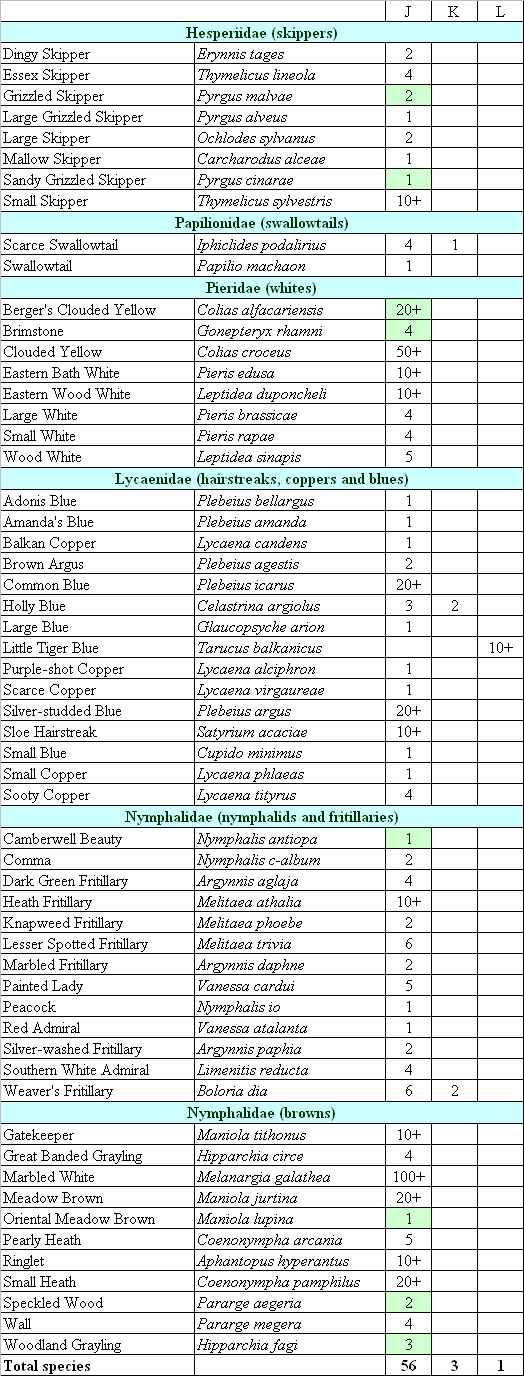
We managed to keep the moth-trap on all night and there was plenty of interest to photograph in the morning before saying our good-byes to Mary who was leaving us early due to prior commitments. We spent most of our last day in Melnik at Belasica Mountain. This was another site quite high in the mountain, taking us quite some time to get there. A truck that had broken down in front of us, on the single-track road, didn't speed things up!
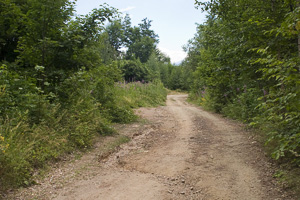
This site was absolutely overrun with Queen of Spain Fritillary, which seemed to be encountered every few yards. Another highlight here was our first sighting of Mountain Small White (Pieris ergane). Other species frequently encountered included Wood White (Leptidea sinapis) and Green Hairstreak (Callophrys rubi).
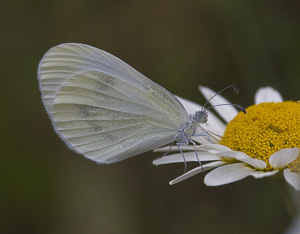
Further up the mountain we came across our first Map (Araschnia levana) for the trip, whose summer brood was just emerging. As we were watching this individual, one of the party noticed a Camberwell Beauty (Nymphalis antiopa) in a nearby tree, so all eyes switched to that instead! A little further up the path was the Bulgaria - Greece border. This was the point at which we turned around back to the bus further down the mountain.
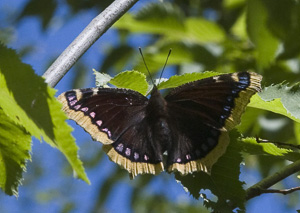
The final highlight of the site was encountered within yards of us getting into the bus to leave - a single Nettle-tree Butterfly (Libythea celtis), famous for its long "snout", sitting in a tree.
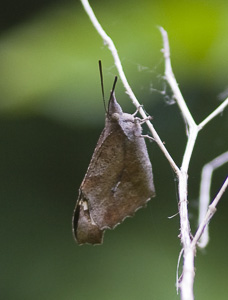
Unfortunately only our guide saw (and photographed) the White-backed Woodpecker (Dendrocopos leucotos), but a dragonfly, Ophiogomphus cecilia, obliged us all on the track on the walk down.
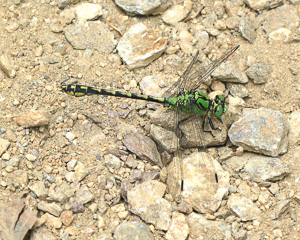
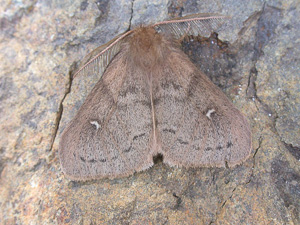
On our way back to our accommodation we stopped off at a meadow, although it was getting rather late in the day. The entrance to the meadow consisted of several bramble bushes that seemed alive with activity. But another new species for the trip was seen - a White-letter Hairstreak (Satyrium w-album). We also had a couple of more sightings of Map (Araschnia levana).
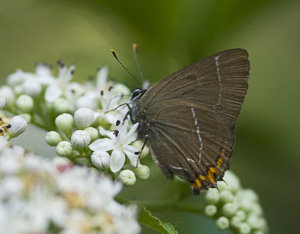
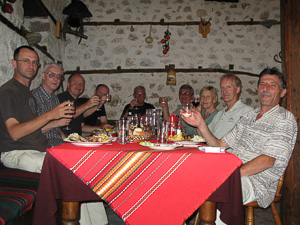
Butterfly Day Listing
Site N - Belasica Mountain
Site P - Melnik meadows
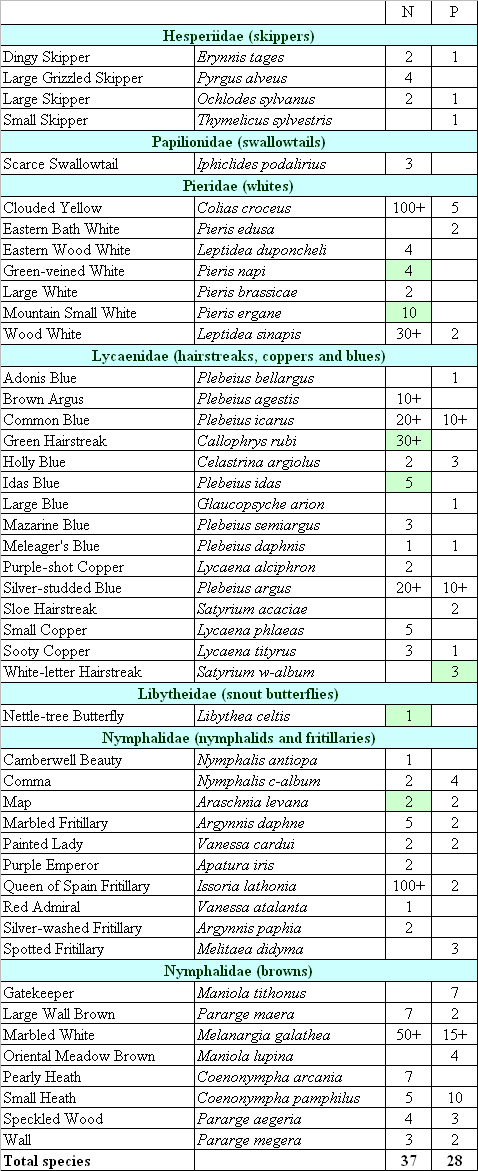
Leaving Melnik behind, we set off towards our last location of the trip at Trigrad. As usual, we made the most of our journey there, stopping at the side of the road near Pirin. This was quite a mountainous area and, although the land could clearly do with seeing some rain, did have some pockets of greenery. Our first venture took us down a hillside from the road, where a winding path took us to an area where water was visibly running down the hillside. Here we came across a good number of Sooty Copper (Lycaena tityrus).
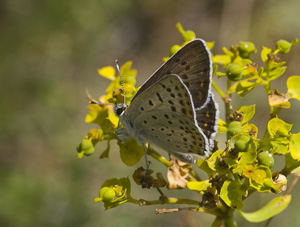
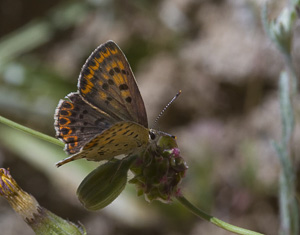
A little further along the road we stopped again, this time to look for the Apollo (Parnassius apollo) which fly in the area. We weren't disappointed - a single Apollo came floating down from the hillside, over the bus, and then continued further down the hill, disappearing from sight. However, a clearing just off the side of the road that had quite lush vegetation revealed another 6 Apollo, together with good numbers of Silver-washed Fritillary (Argynnis paphia) and several Great Banded Grayling (Hipparchia circe), including a mating pair.

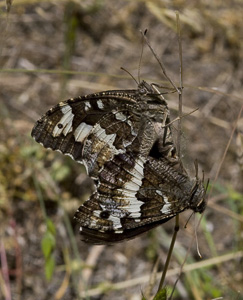
The steep bank above the road was covered in flowers that were being used by up to fifteen Hummingbird Hawk-moths (Macroglossum stellatarum), a Broad-bordered Bee Hawk-moth (Hemaris fuciformis) and several Berger's Clouded Yellow (Colias alfacariensis). A Geometrician (Prodotis stolida) was disturbed from the vegetation on the opposite side of the road.
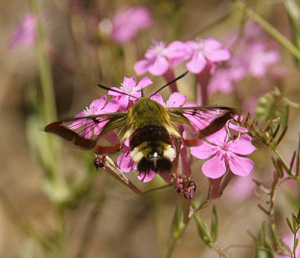
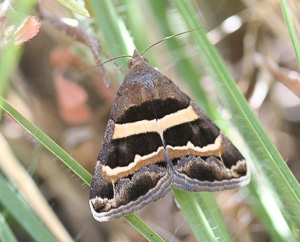
We then carried on towards Trigrad and stopped at Satovca to spend some time in an absolutely stunning flower-filled meadow.
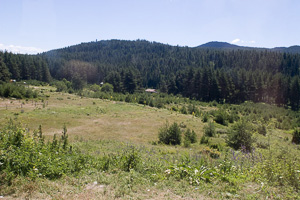
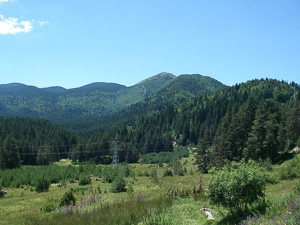
This was another excellent site, which included good numbers of Niobe Fritillary (Argynnis niobe), Queen of Spain Fritillary (Issoria lathonia), Arran Brown (Erebia ligea) and Large Ringlet (Erebia euryale).
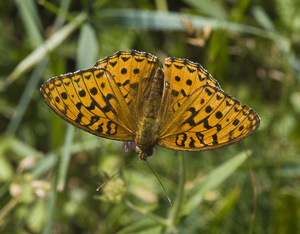
Between Satovca and Trigrad we pulled over to the side of the road to greet another party that was also on a tour with BBFS, but heading in the opposite direction! As we talked, a Hungarian Glider (Neptis rivularis) flew past, giving us another "tick" for the trip.
Our last stop before arriving at our hotel was in the steep Trigrad gorge where we had spectacular views of a pair of Wallcreepers feeding their youngster. The nest was about thirty feet above us on the overhanging rock on the opposite side of the narrow road that we were standing on. The song of the adult male rang out up the valley. What a superb end to the day.
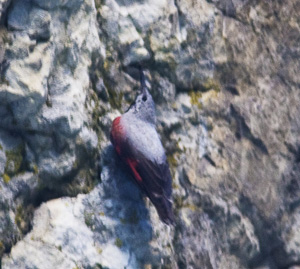
We eventually arrived in Trigrad which is set in a valley surrounded by tree-lined mountains.
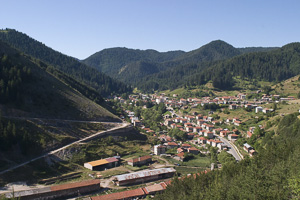
Butterfly Day Listing
Site R - Pirin
Site S - Satovca
** On road between Satovca and Trigrad

The moth traps were full of interesting things this morning (certainly the best catch of the week) including Spurge Hawk-moth Hyles euphorbiae, Isle of Wight Wave Idaea humiliata, Rhodostrophia vibicaria, Netted Pug (Eupithecia venosata), Purple Treble-bar (Aplocera praeformata) and Eutelia adulatrix.
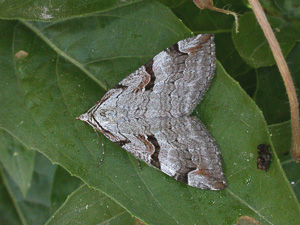
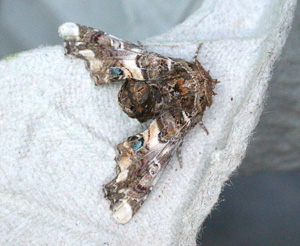
The locals also showed great interest in what we had caught overnight and were keen to check our identifications.
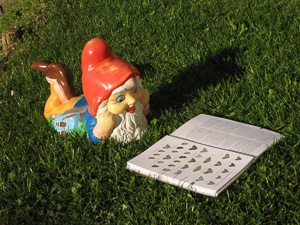
The morning of our last day was spent walking some of the local mountain paths in Trigrad.
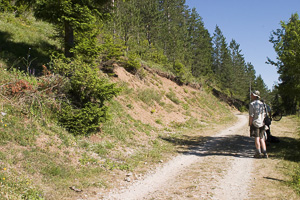
In the short amount of time we had before we had to get going to the airport in Sofia, we encountered a good number of Apollo (Parnassius apollo), together with 3 species new to the trip, bringing our total species count to 107. The new species for our list were Geranium Argus (Plebeius eumedon), Ripart's Anomalous Blue (Plebeius ripartii) and Great Sooty Satyr (Hipparchia ferula), rounding off a very memorable week!
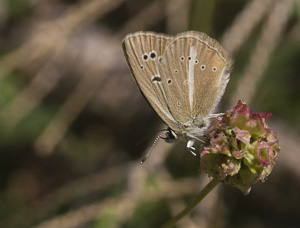
As we walked back to bus we noticed a couple collecting hay, with the man of the house directing his wife. Good to see that equality is alive and well in Bulgaria!
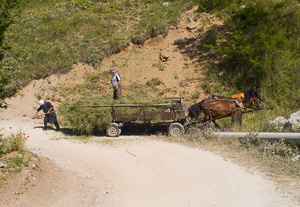
And so ended our trip - and an absolutely marvellous week. I'm sure it won't be long before we all return to this wonderful part of the world while it is still relatively unspoilt.
Butterfly Day Listing
Site U - Trigrad
